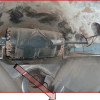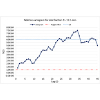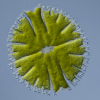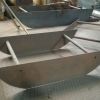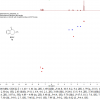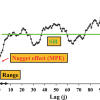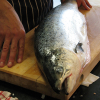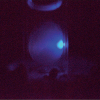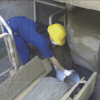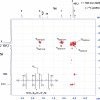Articles and Columns
Do you educate students who may go on to work in industry, or are you involved in assimilating students into your team? If so, you will really want to read this issue’s Tony Davies Column. Tony and co-authors, Jennipher Dania and Joachim Zahradnik, are undertaking two surveys to explore this area: one for Academics and one for Industrialists. Please do spend the very short time needed to complete one (or both) of these surveys.
Significant research is underway globally into both improving corrosion protection as well as removing chemicals of concern from existing corrosion protection coatings. This is because the cost of corrosion in developed economies has been consistently shown to lie in the range 2–4% of Gross National Product.
Nanomaterials find widespread applications in many fields of science and nanotechnology, especially as catalysts in the chemical, bio-nanotechnology, nano-electronics and pharmaceutical industries. Understanding the physical and chemical properties of nanoscale materials is important, not only because of the fascinating nature of the subject, but also due to their potential applicability in almost every branch of science and technology. Nanostructured materials offer interesting properties, because at the atomic or molecular scale, the physical properties of a material become size dependent due to the quantum confinement and surface states effects.
In this article the question of the certification of calibration samples for the characterisation of advanced thin film materials is addressed within the framework of reliable process control or quality management purposes. Reference measurement techniques can be used in order to address the gap in appropriate certified reference materials (CRMs) for thin film analyses. They allow for qualifying out-of-production samples originating from an operating production line as calibration samples. As a template for this procedure, CIGS [Cu(In,Ga)Se2] layers, that are absorber layers for high efficiency thin-film solar cells, have been used for establishing and validating reference-free X-ray fluorescence (XRF) analysis and Auger-electron spectroscopy (AES) as reference measurement techniques.
Sampling takes place every day in everybody’s daily life. Consciously or unconsciously, we all take decisions regarding how to select and collect the things we need, be those vegetables or coffee in the supermarket, or material for academic research projects—with everything in between. Those who have been curious enough to reflect on everyday decision-making processes, discovered immediately that sampling decisions often make all the difference. This is why an incipient theory started to be elaborated. One individual, more brilliant than others, made a giant step forward in the evolutionary thinking on sampling and developed what became the Theory of Sampling (TOS); his name was Pierre Gy. Here, we discuss cases both pro et contra TOS.
Karin Engström, LKAB mining, Kiruna, Sweden, continues to present illuminative cases from process industry. Here she reveals more from her ongoing PhD project showing application of variographic characterisation for on-line continuous control of process sampling systems, including the one that was validated according to current ISO standards guidelines in the previous column (monitoring a particular iron ore pellet stream). Together, the cases presented constitute a broad didactic showcase of the power of variographic analysis and problem-specific interpretations.
Chris Burgess and John Hammond are back with an “Update on the modernisation of the spectroscopic General Chapters in the United States Pharmacopeia (USP)”. They review progress over the last three years and particularly on the changes intended in the USP Review Cycle 2015 to 2020.
Tony Davies continues his quest to find out what you all need to work more efficiently. You will remember that in the last issue, Tony introduced his survey to discover what developments were needed in spectroscopy by readers. Some of the initial responses are explored, and Tony finds that he has opened a “can of worms”.
It is your turn to contribute: to the potential development of new spectroscopic instrumentation! Tony argues that many spectroscopic fields have seen little real development: and there are many reasons for that. Now, you have your chance to let us and, more importantly, the instrument vendors know what innovations (hardware and software) you would like to see in order to help you in your work. There is a short (three-question) survey ; please use this opportunity to help influence the future of the instrumentation you will be using.
Different spectroscopic techniques have been combined to provide additional and complementary information for decades. Increasingly, this is being expanded beyond just two techniques and may include spatial/imaging information as well. All of which bring their own challenges. In “Multimodal imaging of cells and tissues: all photons are welcome”, David Perez-Guaita, Kamila Kochana Anja Rüther, Phillip Heraud, Guillermo Quintas and Bayden Wood report an example of these new approaches. They look at the use of infrared, Raman and X-ray fluorescence spectroscopies to obtain combined imaging data of whole algal cells and discuss how to overcome the challenges.
This feature forms an intermezzo in the current segment of process sampling columns. We have asked Karin Engström, Luossavaara Kiirunavaara AB (LKAB), Kiruna, Sweden to outline how industrial validation of a process sampling system takes place following ISO standards guidelines.
John Hammond updates us on recent developments with the ISO 17xxx series of standards. John continues with news of standards particularly relevant to readers.
Tony Davies and a number of others consider collecting supplementary spectroscopic data. Like Eurospec, the plan is to use such supplementary data not only to enhance the published paper, but also to aid thorough peer-review by allowing reviewers access to the full data rather than, as Tony puts it, “low-resolution images of data”. I’m sure you will be interested in a look at the future through this column.
Pierre Gy, the inventor of the Theory of Sampling (TOS), pioneered applications of variography to understanding large-scale variability in process plants and process control from as early as the 1950s and devoted a major part of his TOS development period to this subject. The variogram allows one to identify sources of variability and provides valuable insight into correlations between successive samples. Neglect or poor understanding of the data analytical capabilities of the variogram means that it has not been widely applied in process control until now, except in industry sectors which have embraced TOS (mining, cement and certain parts of the process industries) because of the overwhelming consequences of making wrong decisions when treating vast tonnages—the consequences of wrong decisions are simply too great. Failure to address stream heterogeneity means that conventional statistics and Statistical Process Control (SPC) too often fail to identify and distinguish the true sources of variability in a process stream. For each type of heterogeneity, there is a matching variety of process variability. Although the method is powerful in terms of the insights one is able to gain in regard to plant performance and management, examples of the application of this particular method have been suspiciously little notable in the literature.
Colette Germon, Tony Davies and Paul Jones look at “Combining teaching chemometrics, with attenuated total reflection–infrared spectroscopy and food authentication”. They describe a teaching project based around the detection of food fraud. It is a good example of teaching spectroscopic data handling and advanced analysis techniques. They have investigated how adulteration and misrepresentation of meat and fish can be detected, as well as whether frozen and then thawed fish could be differentiated from chilled fish.
Peter Jenks and Alan Nichols embark on “ISO/IEC 17025: a never-ending journey”. They describe what is behind this recent standard and give valuable advice as to what to expect from an audit. Newcomers may find the requirements daunting, but Peter and Alan’s guidance will prove most helpful.
Dmitry Gakamsky and Anna Gakamsky describe how fluorescence may be used to diagnose cataracts in human eye lenses. Further, it may also be able to grade cataracts and monitor the disease’s progress, which may help discover metabolic and ambient factors that influence the progress of the disease.
After the previous column’s introduction to the why, the how and the technicalities involved in process sampling and variographic analysis, it is time for a bonanza of applications and case histories covering as broad a practical scope as possible. In this column, we introduce the critical prerequisites for the variographic experiment, by focusing on the importance of TOS-correct increment extraction for proper variographics. This issue cannot be overemphasised.
Chris Burgess and John Hammond look back 40 years to the start of GLP regulations and consider how closely qualification processes are aligned to quality by design principles.
Developments in hardware, higher field instruments, better multinuclear probes including cryoprobe options, spectrometer control systems and also desktop NMR data processing software have all combined to make the measurement of inorganic nuclei a potentially commonplace and very helpful, often complementary, technique to other spectroscopic analytical tools.


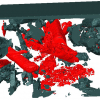
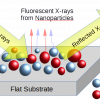
![Illustration of a thin film solar cell based on a CIGS [Cu(In,Ga)Se2] absorber layer](/sites/default/files/styles/thumbnail/public/articles/Thin_Film_30-1_F1w.jpg?itok=oNor7cmJ)
